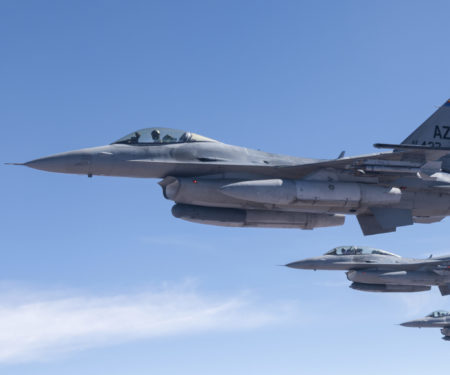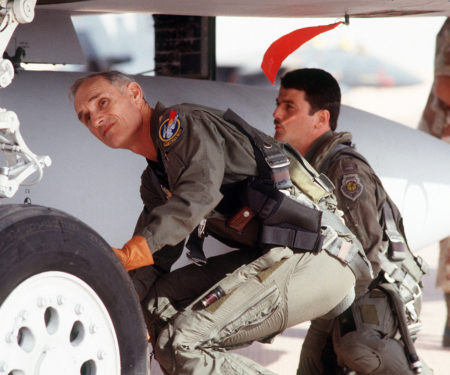Chiefs, Part 1: Discordant Visionary
Pentagon’s Plan to Reduce Civilian Harm May Not Work in Future Conflicts, Experts Say
Report: How Norms of Behavior Could Save Space Companies From Becoming Targets in War
Radar Sweep
One Year Later, Troops and Veterans Involved in Afghanistan Exit Grapple With Mental Scars
Every distressed child an Air Force noncommissioned officer saw in August of last year as he helped evacuate civilians from Afghanistan made him think of his son—like the unresponsive little girl in a dirty green-and-pink pajama set crammed onto his flight, just one of the 120,000 people the military helped evacuate from Afghanistan as the Taliban swiftly reconquered the country after 20 years of U.S. military operations.
Artemis Launch Is a Step Back to the Moon, But a Leap Into a New Tracking Domain
NASA’s launch to the moon will be one small step toward a lunar ecosystem that the military will eventually need to surveil and protect, according to two space experts. Boeing’s Space Launch System rocket, which has been in development since 2011, is expected to launch the 42-day uncrewed flight around the moon for its first mission. The Orion capsule atop the rocket, which will be filled with mementos, a stuffed Snoopy, and sensors to collect data for crewed missions expected by 2025, will travel 1.3 million miles before splashing down in the Pacific Ocean in October.
L3Harris Reveals Delivery Timeline for VAMPIRE Systems for Ukraine
L3Harris expects to deliver its new counter-drone system to Ukraine within nine months of being put under contract. The Vehicle-Agnostic Modular Palletized ISR Rocket Equipment (VAMPIRE) technology was part of a broader $3 billion military aid package.
With New Radar and Engines in Sight, the B-52 Gets Ready for ‘Largest Modification in Its History’
At 70 years old, the venerable B-52 Stratofortress is getting a major facelift, what one Air Force official recently called the “largest modification program in its history,” that the service hopes will keep the plane relevant to 2050 at least. That’s if the service can juggle two major upgrades simultaneously—an ambitious goal for which the Air Force is still formulating a strategy.
New GAO Report Will Inform Space Force-IC ‘Negotiation’ on Space-Based ISR
The Government Accountability Office has entered the swirling debate about the division of responsibility between the Space Force and the Intelligence Community for acquiring and disseminating space-based intelligence, surveillance, and reconnaissance data—with a new report focused on commercial ISR acquisition, according to officials.
SPONSORED: How an Enterprise Approach Solves USAF’s Training Needs
In partnership with the Navy, HII developed and enhanced the resulting Navy Continuous Training Environment (NCTE) which was built on open standards and nonproprietary software, reducing costs and clearing away concerns about vendor-lock-in. HII has been leveraging these proven methodologies to answer emerging Air Force training requirements on our growing USAF portfolio and range programs to prepare warfighters for joint all-domain operations.
KC-46 Tanker Spotted With Puzzling Whitewashed Belly
A Boeing KC-46A Pegasus aerial refueling tanker has been spotted at Boeing Field just outside of Seattle with an odd whitewashing of sorts along much of the underside of its fuselage as well as underneath parts of its wings and rear stabilizers. The appearance of this aircraft comes as Boeing continues to work to fix long-standing and serious problems with the KC-46A's refueling boom and the remote vision system that boom operators use to guide it into receiving aircraft.
That Time the Air Force Delivered a Heart on a Supersonic Bomber
The Air Force FB-111A Aardvark was designed to fly low and fast over enemy territory and drop nuclear or conventional bombs deep behind the lines. But on Valentine’s Day of 1986, the bomber, also called the ‘Dark Vark' because of its dark paint scheme, was used for a much less destructive mission. Instead of raining down ordnance, an FB-111A ferried a heart from Oklahoma to Hartford, Conn., in order to save a 46-year-old New York state resident.




